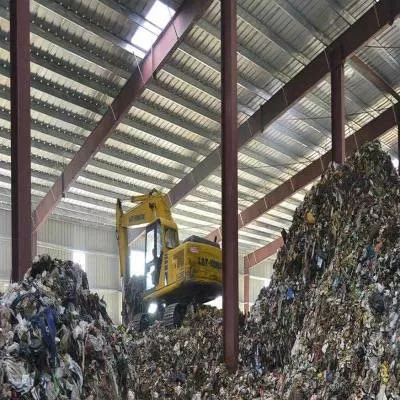- Home
- Real Estate
- METHODOLOGY
METHODOLOGY
Read full article
CW Gold Benefits
- Weekly Industry Updates
- Industry Feature Stories
- Premium Newsletter Access
- Building Material Prices (weekly) + trends/analysis
- Best Stories from our sister publications - Indian Cement Review, Equipment India, Infrastructure Today
- Sector focused Research Reports
- Sector Wise Updates (infrastructure, cement, equipment & construction) + trend analysis
- Exclusive text & video interviews
- Digital Delivery
- Financial Data for publically listed companies + Analysis
- Preconceptual Projects in the pipeline PAN India
Definitions 1. Construction is taken to include civil engineering and construction contracting. 2. Revenue indicates ‘standalone operating revenue’ and includes sales revenue but does not include other income and revenue of subsidiaries. 3. Profit is taken as net profit after tax (PAT) where the company has only one segment. In case where the company has multiple segments, we have taken segment-wise profit, wherever possible. In such cases we have also resorted to taking EBITDA numbers with a note as we feel that since we measure growth, the growth parameter would be captured therein. Also, wherever standalone net profits numbers are available, we have considered the standalone net profit for the last six years. In exceptional cases we have taken consolidated numbers when the true numbers are not being reflected through the standalone numbers. In these exceptional cases, we have pointed this out as a note. Qualifications 1. Company form: Should be a legal entity created in any one of the three modes: a) Registered as a public or private limited company under the Indian Companies Act, 1956, b) Registered as a partnership firm under the Indian Partnership Act, 1932, or, c) A public sector undertaking created under an Act of the Parliament or State Legislature. 2. Audited accounts: The annual statement of accounts, balance sheet and profit and loss account audited by an accredited firm of chartered accountants, and the same submitted annually to the body of share or stakeholders. 3. Foreign companies working in India but not incorporated in India are excluded. Proprietary firms are also excluded. 4. Size of company: Revenue to be above `2 billion for construction companies and other construction related companies in the immediate last financial year (2021-22). Financial results closed during any of the calendar months falling between April 2021 and December 2022 are also considered. 5. Age: The company should have been incorporated at least six years ago. The statement of accounts, thus, should be available for financial years 2016-17 up to 2021-22. 6. Nature of business: The mainline business of the company should primarily be civil works, construction and contracting, registered as a public or private limited company. In the case of diversified companies, the contribution of construction to the gross annual revenue should not be less than 50 per cent in each accounting year if segment-wise reporting is not available. Companies that do not report annual revenues separately by segments (for construction) do not qualify for inclusion. A construction company servicing in-house requirements of the group and which does not cater to the open market is excluded from the scope of this study. Ranking Methodology 1. Ensure the companies in the frame have financial results for all the years, i.e. FY2016-17 up to FY2021-22. 2. Two prime indicators were considered for the ranking: Operating revenue and profit after tax (PAT) (as reported in the annual results). 3. Year-on-year percentage change was computed for each of the years, for revenue and PAT. For companies who have posted a turnaround in FY2022, its FY2021 PAT performance is averaged taking its five years performance to normalise the ranking calculation. 4. In the case of net loss for two or more consecutive years, the values were treated in absolute terms while computing the year-on-year. For example, a net loss of `100 million rising to Rs150 million in the next year is a negative growth, but if the same comes down to `50 million, it is treated as a positive growth. 5. The companies were ranked in terms of descending order of year-on-year change (revenue and profit) for each of the years. (Fastest growth was ranked one and slowest, the last rank). 6. The rank of each year was then multiplied by the weight (see table below) assigned to that year. This was done separately for revenue and PAT. The results were totalled for each company to form the index for both revenue and profit. 7. Companies were sorted in ascending order of the composite index to arrive at the fastest growing companies. Thus, the company with the lowest composite index was ranked first and as the topper. 8. Companies reporting losses in 2021-22 are not considered for the CW Awards. Construction companies have been categorised as under: • Large with revenue >`55 billion (`5,500 cr) • Medium with revenue >`20 billion to < `55 billion. • Small size with revenue < `20 billion but >`2 billion. 9. Jury members hold a right of veto and despite a company emerging in the top ranks, can be pushed down the ranks if the jury does not find it worthy qualitatively. The quantitative performance is placed before the jury, which then observes the qualitative aspects of the companies emerging among the top ranks and then decides to use its veto power in altering the ranking of the top performers. Qualitative aspects include quality of management, corporate ethics, governance, reputation, etc. Note: Some of the figures mentioned in the profiles of the winners relate to consolidated figures of the group under which the company operates.
























